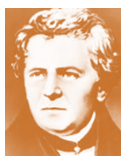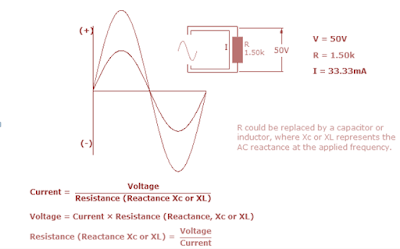What is Ohm's Law ?

In 1826 Georg Simon Ohm discovered that for metallic conductors there is substantially constant ratio of the potential difference between the ends of the conductor.
Ohm's Law states that the current flowing in an electric circuit is directly proportional to the applied voltage and inversely proportional to the resistance of the material.
 |
| Ohm's Law equation |
I- current
V-voltage
R- resistance
Ohm's law is explained by the following statement.
1. Current varies directly with applied voltage
A change in the voltage applied to a circuit will cause the current flowing in the circuit to change. If the resistance is constant, the current change will follow the pattern of the voltage change. Doubling the potential difference doubles the current.
2. Current varies inversely with resistance
Changing the resistance in a circuit will also cause a change in current flow. if the voltage applied to a circuit is held constant, and the resistance in the circuit is increased. With more opposition to current flow in the circuit, the circuit current will decrease. On the other hand, if the resistance is decreased the amount of current flow in the circuit will be increased.
3. Voltage vs. current
The relationship between voltage
and current can be graphically
represented with this illustration.
thus:
1. the higher the voltage, the larger the current
2.the higher the resistance the lower the current
AC Ohms Law
In this regard, Its only possible to calculate instantaneous values of voltage and current throughout its cycle.
For AC Ohms law can be expressed by the the same equation , where R could be replaced by a inductor or capacitor , where Xc or XL is the AC reactance
Ohms Law Derived formulas formulas from
Ohms law circle
Ohms law circle
V= I x R
I= V/ R
R= V/ I
I= V/ R
R= V/ I



wow.. you must be smart.. :-)
ReplyDeletei remember this formula.. but i don't remember the theory..